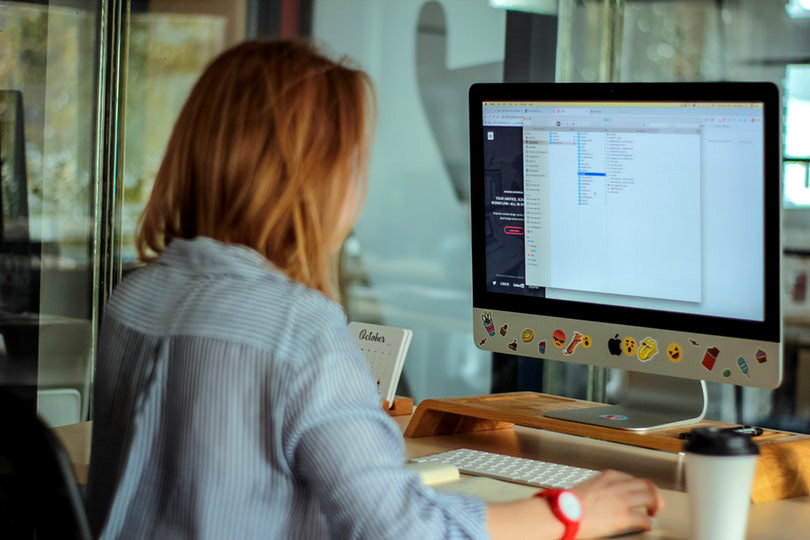An all-in-one computer is typical in modern offices, even though the word is rarely heard. Many types of desktop computers are available, but in the most basic terms, they all come together in an integrated desktop. In many ways, it's the same as a standard desktop setup but with a significantly smaller footprint. In addition, the all-in-one desktop differs from a traditional desktop in that you often buy an AiO PC with the updates you desire already installed.
Who Is The Best Candidate For An All-in-One PC?

Rather than choosing between a desktop computer and an AiO, the only option left may be between an AiO and a laptop. There is no substitute for a high-end laptop when it comes to portability. While AiOs can be moved about, they aren't designed to be used on the go.
A notebook may be preferable to a desktop for mobile workers because laptops have grown to offer many of the same vital functions—AiOs excel in many applications. You may use them to keep the most crucial computer components out of classrooms, public libraries, shared computers, and other areas where it's useful.
Buying an All-in-One PC
In other words, your laptop's 15-inch screen is getting uncomfortable after a while, and you spend most of your time in one place. Adding a second screen to your laptop is possible, but you should choose an all-in-one desktop computer instead. A desktop PC with a 23-inch or bigger screen costs the same as a 17-inch laptop that weighs more than 10 pounds. When it comes to Windows 8 touch, an AIO system is likely to provide you with a better experience than a laptop or tablet.
An All-In-One PC's Pros And Cons

In a way, all-in-one computers are like laptops for the office. There is no need for a separate computer; all the components are packed in a sleek, small container. Suppose you're wondering why you'd choose an AiO PC instead of a standard desktop and monitor from a well-known brand like ASUS, Dell, Microsoft, or Lenovo. As a guide, consider the following four positive and negative aspects of purchasing an AiO PC.
All-in-one PCs are easy to travel to
The fact that it's challenging to move a monitor, tower, cables, and other devices with a standard desktop PC, so it's usually restricted to the workplace or house. It's possible to avoid carrying a keyboard and mouse if you have an AiO PC with touchscreen capabilities; however it's more common to see a single unit with a cord while transporting an AiO PC; AiO PCs are more portable than their desktop counterparts, but if you're always on the go, you'll still want to grab a laptop.
All-In-One PCs Save Space
AiO PCs are growing thinner and thinner, so they may easily be mistaken for a regular display. Not at all; all the necessary hardware is contained within. The linked tower with a conventional desktop PC may free up much room; whether you have a tiny area in your house, you require a multi-PC configuration.
You don't want two or three towers at your feet, or you have several PCs in an office environment. In the workplace, the lack of cords connecting monitors to towers gives the space a more professional appearance to any possible clients who might drop by.
All-In-One PCs Have Touchscreens
These days, touch displays can be found on many Windows laptops and AIO PCs. The Microsoft Surface Studio's pen support and touch capabilities make it an excellent choice for artists and designers. Some Windows 10 apps, such as those that need a touchscreen or pen, perform better on these devices. Because of its touchscreen, an AiO will seem comfortable to anyone who has used a tablet for some time and now wants a more powerful computer.
All-In-Ones Are Hard To Upgrade
A PC's available hardware is continuously being upgraded. If you buy a high-end computer, it will be out of date in a few months. It's difficult to accept that the computer you spent a lot of money on is no longer the finest on the market since computers are investments. Standard desktop PCs may be updated to combat hardware obsolescence. You remove the old hardware and replace it with the new one you bought by opening up the computer tower.
All-In-One PCs Have One Display
Unless you set the AiO at your feet or to the side of your desk and link it up to an external monitor, you're trapped with one Display for the life of the AiO PC. In the short term, your AiO's built-in Display may be adequate, but what if you want something larger or greater resolution in the future? There is also the issue of a defective display. Instead of being able to buy a new display, you must either have the entire AiO PC fixed or buy a new one.



